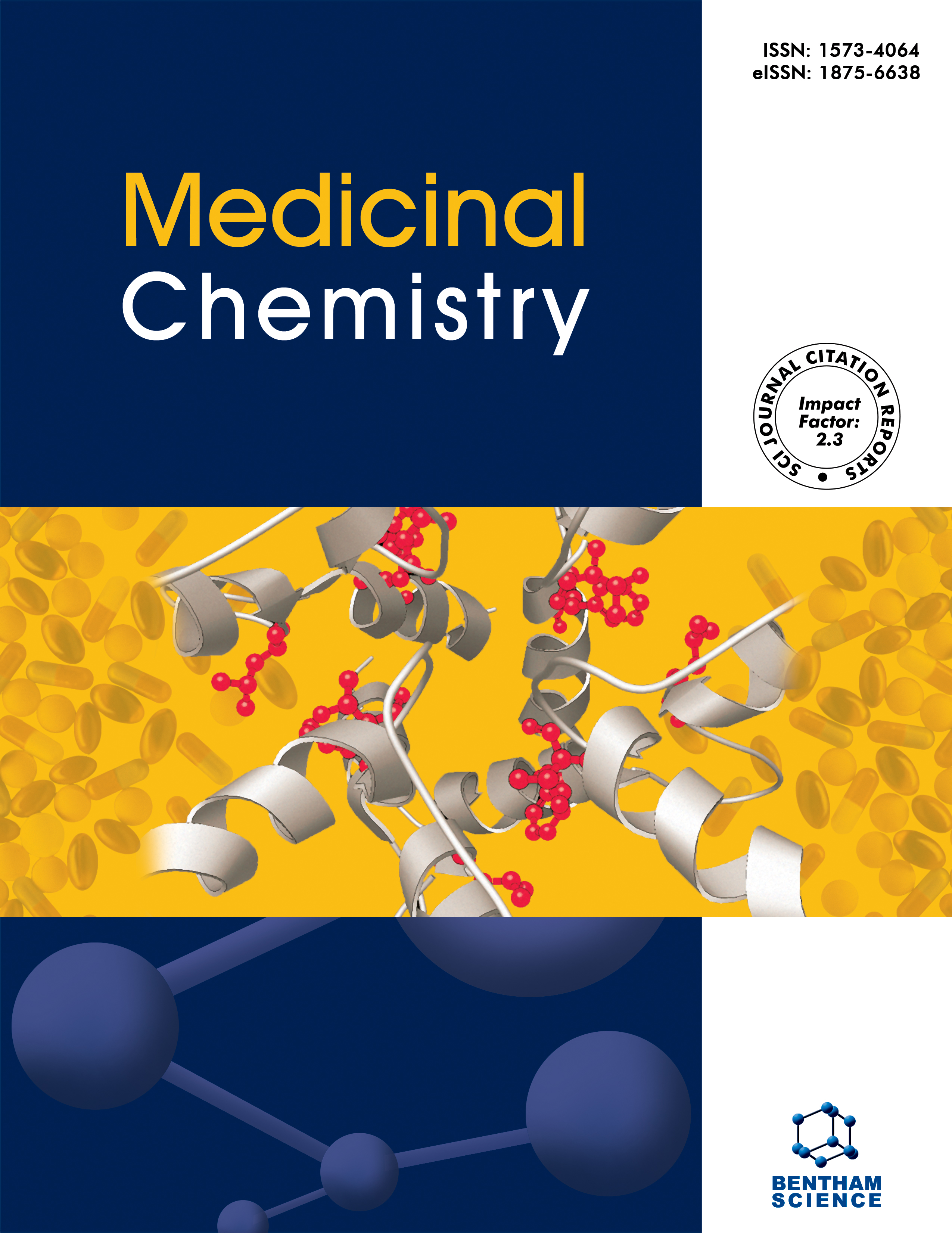-
s Structural Elucidation of Unique Inhibitory Activities of Two Thiazolo[ 4,5-d]pyrimidines Against Epidermal Growth Factor Receptor (EGFR): Implications for Successful Drug Design
- Source: Medicinal Chemistry, Volume 10, Issue 1, Feb 2014, p. 46 - 58
-
- 01 Feb 2014
Abstract
In our previous study, a protein engineering approach, accounting for the effects of single point mutations of the binding site residues on the stability of 22 thiazolo[4,5-d]pyrimidines in complex with the intracellular kinase domain of EGFR (PDB ID: 1XKK), was established in a systematic manner to be an efficient strategy for the identification of anti-EGFR-related-cancer drug candidates. The inhibitory activities of two lignad molecules, 4-(7-(3-chloro-4-morpholinophenylamino)thiazolo[4,5-d]pyrimidin-2-ylamino)benzenesulfonamide and 4-(7-(4-morpholinophenylamino) thiazolo[4,5-d]pyrimidin-2-ylamino)benzenesulfonamide, exhibited some sort of uniqueness. Regardless of a slight mutual structural difference between these two ligands in only a peripheral Cl atom, their inhibitory activities against EGFR appeared to be associated with two quite opposite structural bases respectively. Herein, the fundamental rationalization of the remarkable standpoint is elaborated using both molecular docking and molecular dynamics simulations. Consequently, a number of implications of vital importance for the successful structure-based design of prospective drugs against EGFR-related cancers are discussed.


